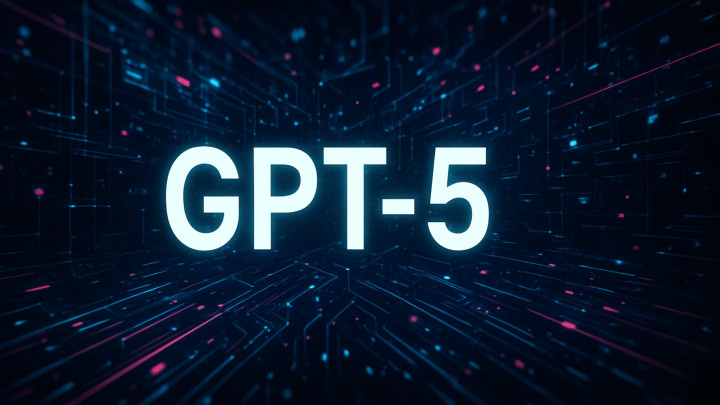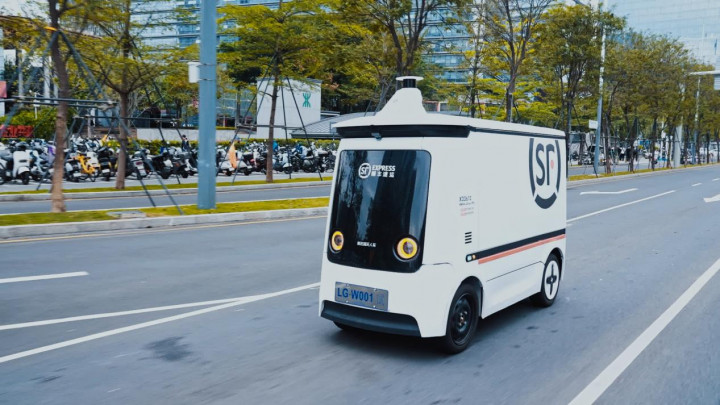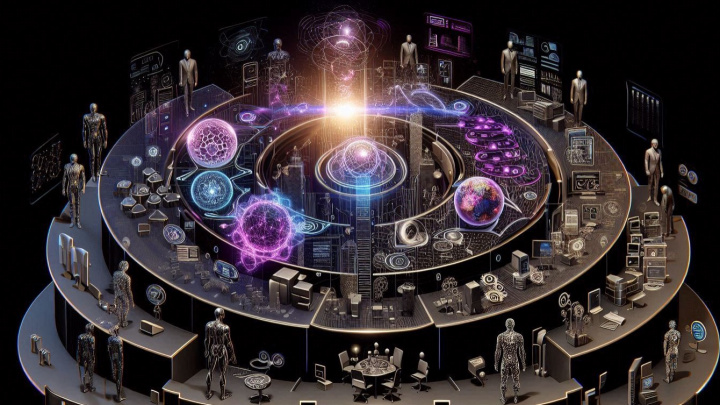GPT-5 Has Arrived: PhD-Level Experts in Your Pocket
OpenAI officially took the wraps off GPT-5 on Thursday, introducing what CEO Sam Altman described as having "PhD-level experts in your pocket." The new model, which will now be the default for all ChatGPT users, including those on free plans, marks the company's most ambitious effort yet to unify advanced AI capabilities into a single, adaptive system.

The goal is no longer just rapid information retrieval but tackling tasks that require deep contextual understanding and complex reasoning. This marks a shift from AI as an "all-knowing assistant" to AI as a "thinking partner.
This launch arrives in the midst of an intensely competitive AI landscape. Tech giants like Google with its Gemini family of models and Anthropic with its Claude 3 series are also investing heavily in developing their own advanced systems. This fierce competition is pushing companies beyond raw performance benchmarks to innovate on user experience, reliability, and accessibility. GPT-5's unified, adaptive architecture is a clear strategic move to position ChatGPT as the most powerful, yet simplest-to-use tool on the market.
Echoes of the Past: "1,000 Songs In Your Pocket"
When Sam Altman described GPT-5 as having "PhD-level experts in your pocket," it's hard not to hear an echo of Steve Jobs's iconic 2001 announcement. The Apple co-founder introduced the first iPod with the slogan "1,000 songs in your pocket," a line that revolutionized how people thought about music. Instead of talking about megabytes and technical specifications, Jobs distilled a major technological breakthrough into a simple, personal benefit. Altman’s phrasing appears to be a deliberate nod to this marketing genius: it takes the incredibly complex and abstract power of GPT-5—its deep reasoning and expertise—and packages it into a similarly tangible and personal advantage, signaling that AI is also becoming a personal, everyday tool.
The Evolution of GPT Models
GPT-5 represents a significant evolutionary leap from its predecessors. While GPT-4 broke ground with its multimodal capabilities (understanding text, images, and audio), the more recent GPT-4o ("omni") focused on speed and delivering real-time, more human-like interactions. GPT-5 converges these two paths and adds a third dimension: deep, expert-level reasoning. This progression highlights a broader industry trend away from specialized models toward creating general-purpose systems that more closely approximate human cognition—a step toward Artificial General Intelligence (AGI).
Enhanced Performance and Practical Implications
GPT-5 demonstrates state-of-the-art performance across multiple benchmarks, particularly in coding, healthcare, and mathematical reasoning. But beyond the benchmarks, its capabilities signal profound practical shifts. For developers, the proficiency in "vibe coding"—generating entire software applications from a single prompt—could dramatically accelerate development cycles by allowing them to focus on high-level concepts instead of granular details. For an everyday user, the "PhD-level expert in your pocket" means more reliable assistance in understanding complex financial, legal, or scientific topics. In a corporate setting, it could automate analysis and strategy-creation tasks that previously required highly trained human experts.
Unified Architecture and Accessibility
The new model operates via a real-time router that intelligently selects between a fast, efficient model for routine queries and a deeper reasoning model for complex problems. OpenAI is making GPT-5 available across all user tiers, with varying usage limits. Free users will have access until they hit a cap, after which they will switch to GPT-5 mini. Plus subscribers receive higher usage limits, while Pro users enjoy unlimited access, including to the top-tier GPT-5 Pro with its extended reasoning capabilities.
New Safety Measures and Broader Responsibilities
The rollout of such a powerful model inevitably raises social and ethical questions. GPT-5 introduces a new feature called "Safe Completions," designed to provide helpful responses within safety guardrails rather than outright refusing borderline prompts. This approach aims to mitigate risks such as the creation of sophisticated disinformation. Furthermore, critical considerations like the model's significant energy consumption and its potential impact on the labor market remain at the forefront of the discussion. Experts agree that the focus moving forward will be on how to deploy these tools responsibly, as a means to augment human capabilities rather than replace them.
Conclusion
With the launch of GPT-5, OpenAI has done more than just release a new model; it has set a new standard for user experience and the integration of artificial intelligence. Its unified, adaptive architecture, significantly reduced error rates, and universal baseline access signal a clear trajectory: AI tools are rapidly becoming indispensable in both daily life and professional workflows. The defining question ahead is how quickly—and how responsibly—society and various industries will learn to harness the unprecedented potential it represents.





